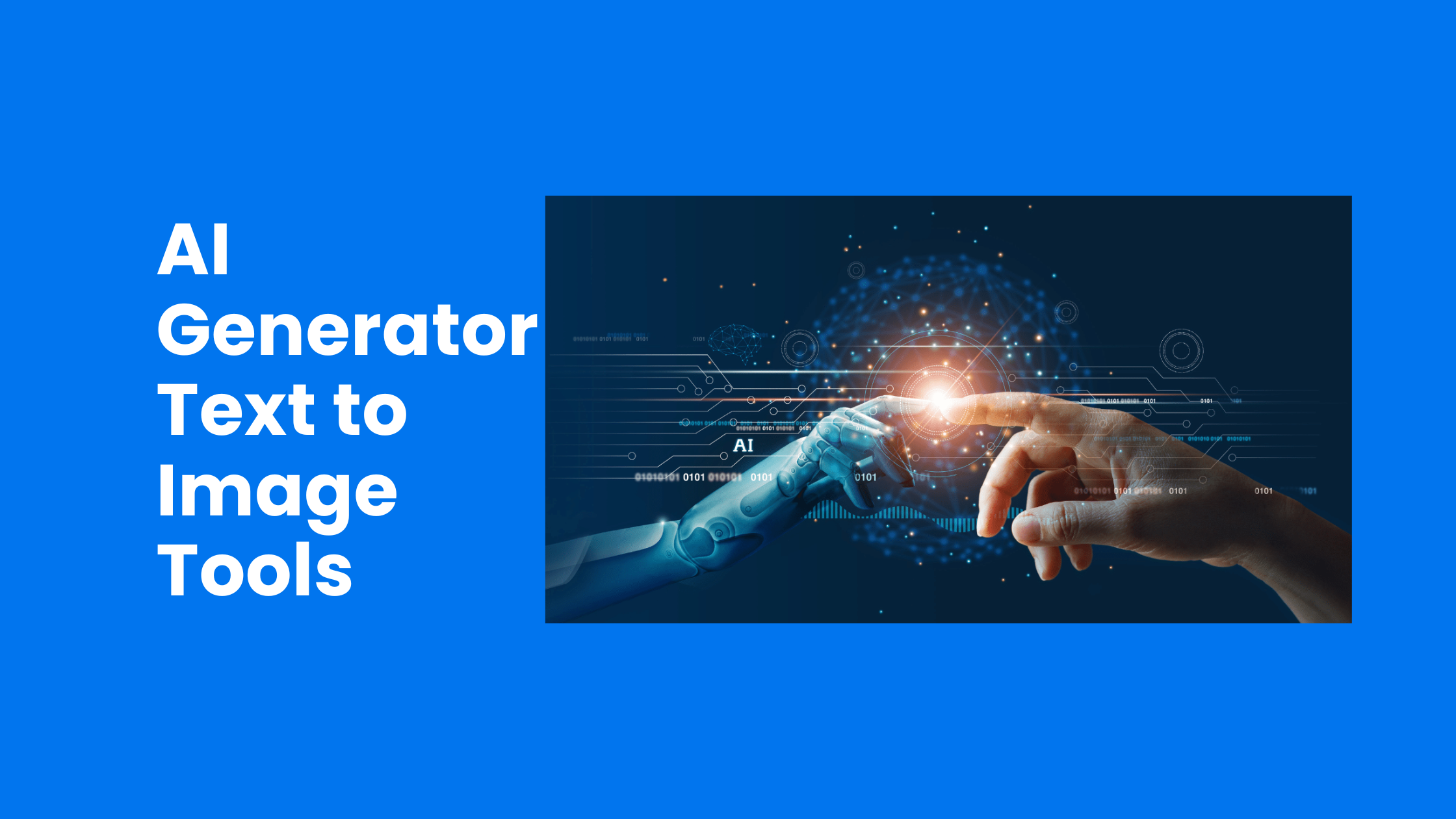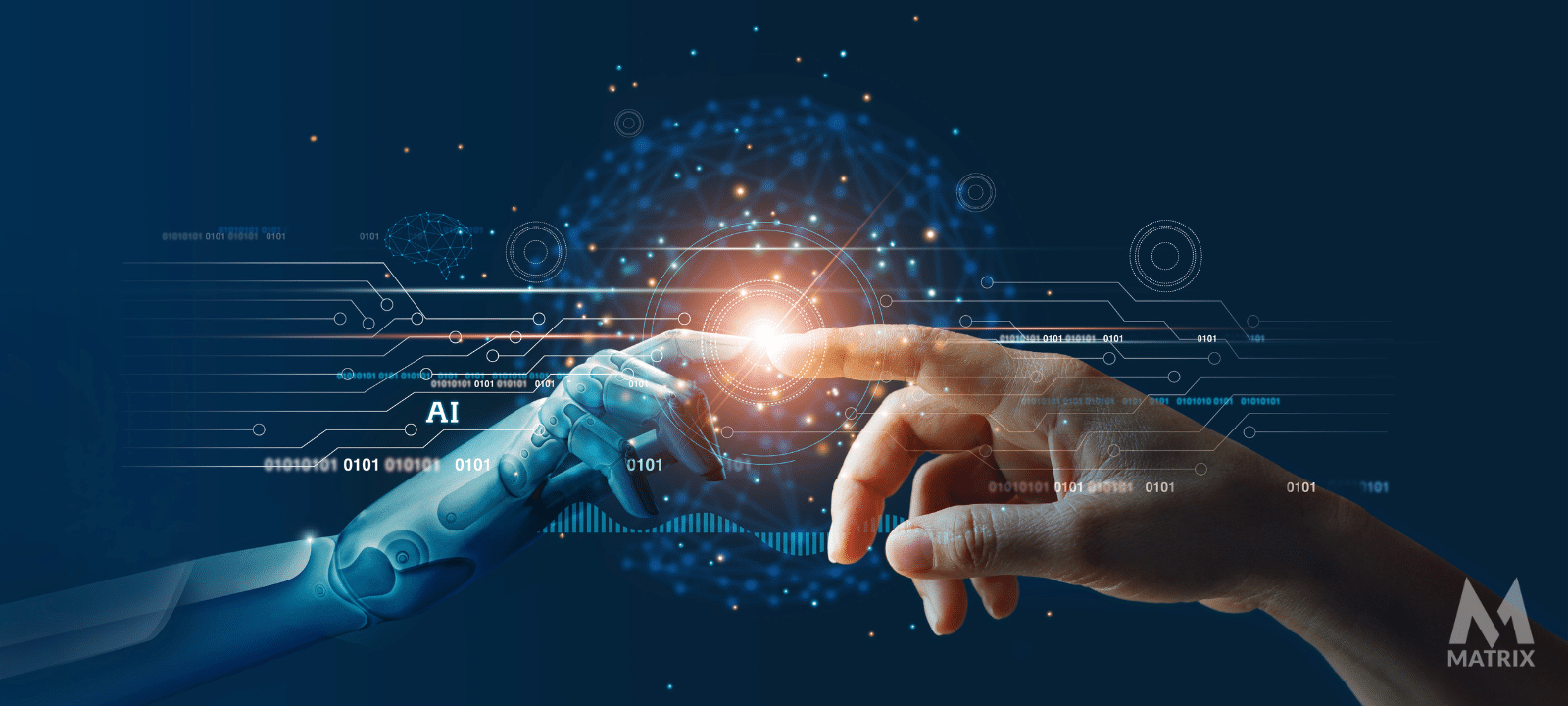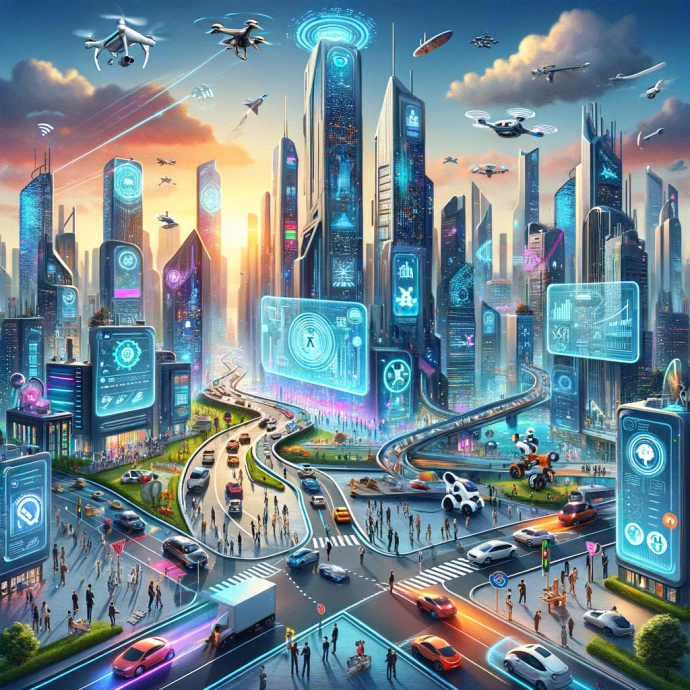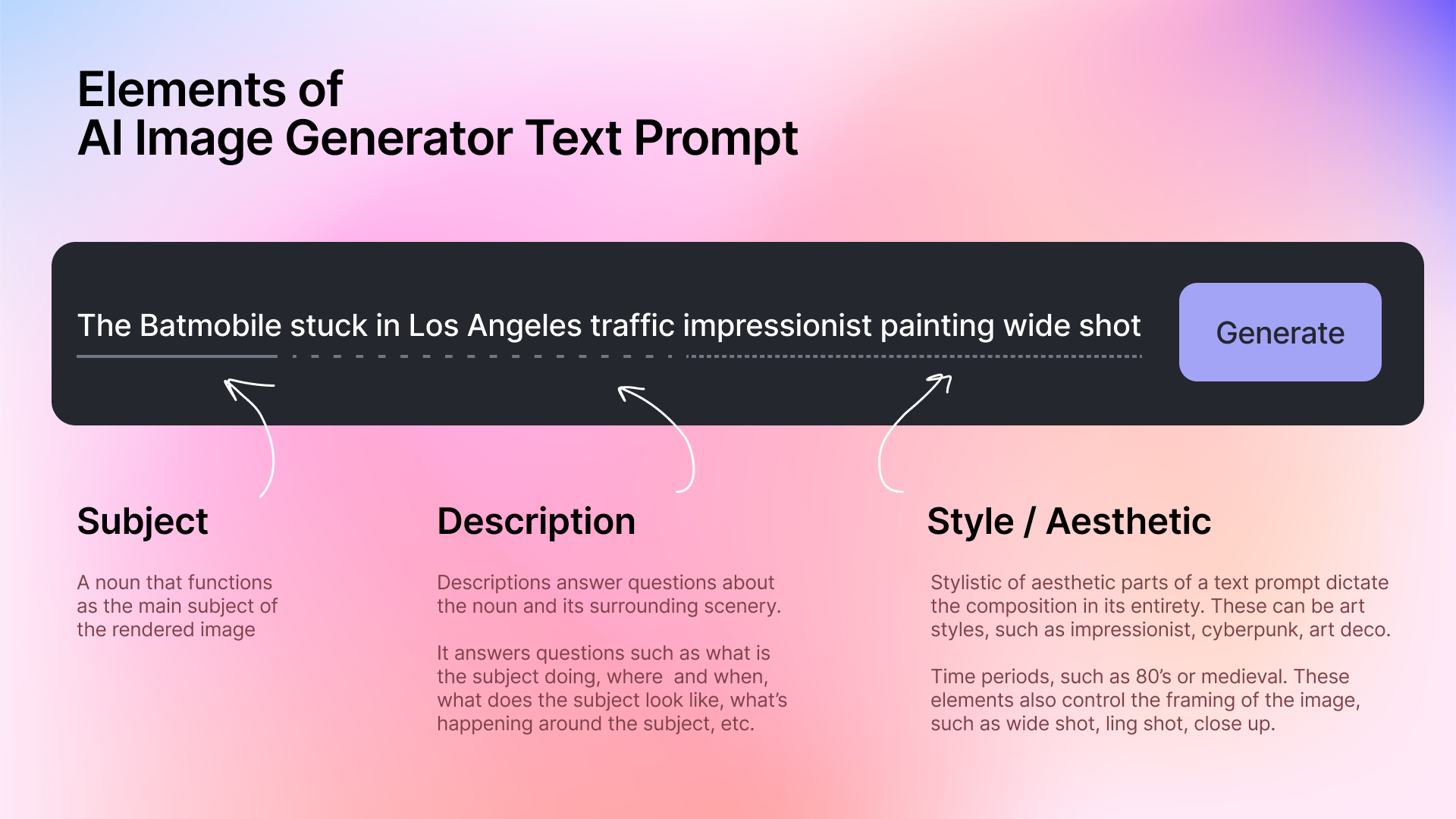
Top 5 AI Generator Text to Image Tools for Stunning Creations
- Image Generators
- November 1, 2024
- No Comments
In our increasingly digital world, the demand for high-quality visual content has never been greater. From marketing and advertising to social media and personal projects, images speak louder than words. However, creating stunning visuals can be time-consuming and requires skill, making it a challenge for many. Enter AI Generator Text to Image—innovative tools that leverage artificial intelligence to turn textual descriptions into breathtaking images. This groundbreaking technology not only empowers creators but also opens new avenues for creativity across various fields. In this blog post, we will explore the capabilities, implications, and future of AI text-to-image generators, uncovering how they are reshaping the landscape of visual content creation.
The Power of AI: Transforming Text into Stunning Images

Artificial intelligence has made giant leaps forward in recent years, drastically changing how we interact with technology. Among its many applications, the ability to generate images from text represents one of the most exciting developments. By analyzing textual input and drawing upon vast datasets of existing images, AI models can create entirely new visuals that resonate with the intended message or theme.
The mechanics of how AI works for text-to-image generation are fascinating. These AI systems typically rely on deep learning algorithms that utilize neural networks. When a user inputs a descriptive sentence, the algorithm breaks down the text into understandable components, identifying keywords, themes, and relationships. The AI then synthesizes these elements into an image.
This approach allows for an incredible range of creativity, as the AI doesn’t just replicate existing images; it generates new interpretations based on the provided text. Whether you’re looking for a whimsical creature from a fantasy novel or a sleek modern office space, these AI tools can bring your vision to life in a matter of moments.
The Role of Natural Language Processing
Natural Language Processing (NLP) plays a pivotal role in transforming text into images.
NLP involves the interaction between computers and human language, enabling machines to understand, interpret, and generate human language in a valuable way. In the context of text-to-image generators, NLP helps the AI comprehend the nuances of the prompt provided by the user.
For instance, if a user enters a phrase like “a serene lakeside at sunset,” NLP allows the AI to grasp what elements are essential—like “lakeside” and “sunset”—and what feelings or moods those words evoke. As a result, the generated image reflects not just the literal translation of the words but also their emotional context.
The Impact of Machine Learning
Machine learning is another cornerstone of successful text-to-image generation.
Machine learning enables systems to learn from data, improving performance over time without being explicitly programmed. For AI image generators, this means that as more users interact with the system and provide feedback, the AI becomes increasingly adept at producing visually appealing results.
By training on extensive datasets containing millions of images and their corresponding texts, these systems develop a rich understanding of artistic styles, color palettes, and composition techniques. Consequently, they can generate unique images that often exceed user expectations.
Unlocking Creativity: How AI Generator Text to Image is Revolutionizing Art and Design

As AI technology evolves, its potential to unlock creative possibilities becomes more pronounced. Artists and designers are beginning to embrace text-to-image generators as powerful allies in their creative processes, allowing them to explore concepts that may have otherwise remained unrealized.
This collaboration between human creativity and AI capabilities pushes the boundaries of what’s possible in art and design. By generating rapid prototypes, artists can visualize their ideas more concretely and experiment with different styles and perspectives without the constraints of traditional methods.
Expanding Artistic Horizons
The integration of AI in the art world expands horizons for artists.
Artists can take advantage of these tools to brainstorm and generate diverse imagery, helping overcome creative blocks. Instead of spending hours sketching or refining concepts, they can generate numerous iterations quickly.
This instant feedback loop fosters innovation, enabling artists to explore different directions they might not have considered otherwise. AI acts as a partner, providing fresh perspectives that spark further inspiration.
Bridging Unique Styles
Moreover, AI text-to-image generators can blend various artistic styles seamlessly.
An artist interested in combining Impressionism with surrealism can input descriptive phrases that capture the essence of both styles. The AI then interprets these instructions, creating a hybrid masterpiece that showcases the strengths of each genre.
This feature encourages cross-pollination within the art community, as artists draw on influences that span cultures and epochs to produce something entirely new and distinctive.
Fostering Democratization of Art
Additionally, AI image generators are democratizing access to art and creativity.
Individuals who may not have formal training in art can now express their ideas visually. By typing out a description, anyone can instantly generate an image, empowering people to communicate through visuals without needing to master complex artistic skills.
In this sense, AI serves as a tool for self-expression, enabling individuals to share their stories and ideas with the world. The convergence of technology and artistry creates a more inclusive environment where creativity knows no bounds.
From Imagination to Reality: Exploring the Capabilities of AI Generator Text to Image

AI text-to-image generators have come a long way in terms of sophistication and versatility. From fantasy landscapes to hyper-realistic portraits, these tools can create an astonishing array of visuals that cater to diverse needs. Their ability to convert vivid imaginations into tangible images proves invaluable across various domains.
As we delve deeper into the capabilities of these generators, we see how they can serve multiple purposes, including entertainment, education, and professional development.
Entertainment and Gaming
AI image generators have revolutionized the gaming industry.
Game developers are using AI to create vast, immersive worlds that captivate players. By simply describing a scene—a haunted castle, a lush forest, or an alien planet—developers can generate intricate backgrounds and character designs.
This efficiency allows for rapid iteration and experimentation during the game design process, resulting in engaging experiences that keep players coming back for more. Furthermore, fans of video games and fantasy genres can use these generators to visualize characters or scenes that exist only in their minds.
Educational Applications
In education, text-to-image generators hold significant potential for enhancing learning experiences.
Teachers can utilize these tools to create visual aids that accompany lessons, making complex concepts easier to understand. For example, a science teacher could describe a cell and generate an illustrative representation, helping students visualize abstract processes.
Additionally, creative writing exercises can benefit tremendously. Students can write descriptions of their characters or settings and receive instant visual representations, encouraging them to expand their storytelling abilities.
Professional Development and Marketing
Text-to-image AI also has practical applications in professional development and marketing.
Marketers can create striking visuals for campaigns with minimal effort. By inputting a description of their target audience’s interests, businesses can generate compelling graphics tailored to specific demographics. This ability to produce unique images on demand enhances brand engagement and communication strategies.
Moreover, professionals in various industries can use AI-generated images to enhance presentations, reports, and proposals. An architect showcasing design concepts can generate realistic renderings based on project descriptions, facilitating clearer communication with clients and stakeholders.
Beyond the Hype: A Deep Dive into the Technology Behind Text-to-Image AI
While the allure of AI text-to-image generators is undeniable, understanding the underlying technology is crucial for appreciating their true potential. Several sophisticated mechanisms work together to make these systems reliable and efficient.
Exploring the technical intricacies unveils the levels of complexity involved in image synthesis and highlights the ongoing innovations shaping the future of this technology.
Generative Adversarial Networks
One of the key technologies driving AI text-to-image generation is Generative Adversarial Networks (GANs).
GANs involve two neural networks—the generator and the discriminator—that work against each other. The generator creates images, while the discriminator evaluates them against real images to determine their authenticity. Through this adversarial process, the generator gradually improves its output quality, resulting in remarkably realistic visuals over time.
The interplay between these networks fuels innovation, ensuring that AI continues to learn and adapt to user preferences and trends, ultimately creating better images that align with user expectations.
Variational Autoencoders
Another vital technique used in some AI image generators is Variational Autoencoders (VAEs).
VAEs operate by compressing images into lower-dimensional representations before reconstructing them. This process allows the model to learn patterns and features inherent in the training data, facilitating the generation of new images based on user input.
The flexibility of VAEs makes them attractive for tasks that require manipulation of images while maintaining coherence and structural integrity.
Integration of Style Transfer Techniques
Text-to-image generators often incorporate style transfer techniques, which enable the AI to apply specific artistic styles to generated images.
By analyzing different artistic approaches, AI can identify and mimic styles ranging from classical paintings to modern graphic designs. This capability adds depth and character to the generated images, allowing users to dictate the visual mood of their creations.
Furthermore, this aspect of technology enables artists to experiment with various aesthetics without physically recreating them, broadening the visual language available to them.
The Future of Visual Storytelling: How Text-to-Image AI is Changing the Narrative
AI text-to-image generators are not just a passing trend; they represent a transformative shift in visual storytelling. By merging technology with creativity, these tools empower users to craft compelling narratives through imagery and illustration. The future of visual storytelling lies within these innovations as they redefine how stories are told and experienced.
Redefining Artistry
As text-to-image AI matures, the definition of artistry itself is evolving.
Traditionally, artistry has been associated with individual expression and mastery of techniques. However, as AI continues to play a prominent role in the creative process, the lines between human authorship and machine generation blur.
This change invites discussions about the nature of creativity and originality. Can an image created by an AI still be considered art? Or does the collaboration between humans and machines elevate the artistic experience? These questions will likely shape the discourse surrounding art and creativity in the years to come.
Expanding Accessibility to Stories
Moreover, text-to-image AI brings democratization to the storytelling landscape.
Individuals from all walks of life can harness the power of these generators to articulate their narratives visually. Writers, bloggers, and content creators can enhance their work considerably by incorporating AI-generated images.
This accessibility fosters diverse voices and perspectives, enriching the collective consciousness with stories that were previously underrepresented.
Engaging Audiences in New Ways
In addition to expanding access, AI text-to-image generators also allow creators to engage audiences in novel ways.
Interactive storytelling experiences can emerge, wherein viewers contribute descriptive prompts that lead to unique visuals, creating a collaborative narrative. This interactivity builds stronger connections between creators and audiences, fostering a sense of ownership and investment in the story.
As more creators adopt these technologies, the landscape of visual storytelling will continue to evolve, enriching our understanding of narrative forms and possibilities.
AI Generator Text to Image: A Powerful Tool for Businesses and Marketers
Businesses today face the constant challenge of capturing attention in competitive markets. AI text-to-image generators are emerging as powerful tools for marketers, enabling them to create captivating visuals that resonate with their target audiences. By streamlining the content creation process, these AI systems empower brands to connect with consumers more effectively.
Personalized Marketing Campaigns
One of the most significant advantages of AI image generators is their ability to facilitate personalized marketing efforts.
Brands can analyze consumer data and tailor messages catered to specific audiences. By generating visuals that reflect the values, interests, and lifestyles of different demographic segments, marketers can create targeted campaigns that drive engagement.
For example, an outdoor clothing company can generate images of adventure-filled scenarios for outdoor enthusiasts, evoking emotions that resonate with their target market. Personalization fosters connections that encourage loyalty and increase conversions.
Enhancing Social Media Presence
In the age of social media, eye-catching visuals are paramount for success.
Businesses can utilize AI image generators to create vibrant, engaging graphics that stand out amidst the noise of digital content. Whether it’s for Instagram posts, Facebook ads, or promotional flyers, AI-generated images can help brands maintain a cohesive and attractive online presence.
Moreover, the speed and efficiency of text-to-image generators allow marketers to respond to current trends promptly, generating timely content that captures audience attention and drives traffic.
Streamlining Content Creation Processes
Efficiency is key in today’s fast-paced marketing landscape.
AI text-to-image generators streamline the content creation process, saving businesses time and resources. Instead of relying on in-house graphic designers to create every visual asset, marketers can generate images quickly and easily.
This freedom allows companies to focus their resources on strategy and messaging rather than getting bogged down in design. Ultimately, this agility translates into higher productivity and improved campaign outcomes.
Ethical Considerations and Potential Risks of AI Image Generators
As with any transformative technology, ethical considerations and potential risks emerge in the realm of AI text-to-image generators. Their capacity to create hyper-realistic images raises questions about authenticity, ownership, and accountability. Navigating these concerns is essential as we embrace the future of visual content creation.
Authenticity and Misrepresentation
The ability to generate lifelike images opens up the possibility of misrepresentation.
As AI-generated images become indistinguishable from reality, there is a risk of misinformation spreading more easily. For instance, content creators could manipulate images to convey false narratives or to deceive audiences deliberately. As a result, critical thinking and media literacy become necessary skills for navigating the digital landscape.
Establishing clear guidelines and standards for the ethical use of AI Generator Text to Image is imperative to mitigate the potential harm caused by misuse or distortion of information.
Ownership and Copyright Issues
Another pressing concern revolves around ownership and copyright issues.
When an AI generates an image based on user input, questions arise about who holds the rights to that creation. Is it the user who provided the prompt, the developer of the AI tool, or the dataset that informed the AI’s understanding? This ambiguity presents challenges for both legal systems and individuals seeking to protect their intellectual property.
Clear frameworks must be established to delineate ownership rights and ensure that creators can confidently navigate the evolving landscape of AI-generated content.
Job Displacement Concerns
There is also concern regarding the potential displacement of jobs traditionally held by artists, designers, and photographers.
While AI image generators can enhance creativity and streamline workflows, they may inadvertently threaten employment opportunities in creative fields. The balance between leveraging technology for efficiency and preserving artistic professions is a delicate one.
Promoting collaboration between AI and human creatives is essential to prevent job loss while reimagining roles that allow for unique contributions in the creative process.
Top AI Text-to-Image Generators: A Comprehensive Comparison
With a plethora of AI Generator Text to Image available today, understanding the landscape can be overwhelming. Each tool offers distinct features, capabilities, and use-cases, catering to different user needs. Below, we will compare several prominent AI text-to-image generators, highlighting their strengths and weaknesses.
OpenAI’s DALL-E
DALL-E, developed by OpenAI, is known for its impressive image generation capabilities.
What sets DALL-E apart is its ability to generate coherent images based on intricate prompts. It can produce images that combine unrelated concepts seamlessly, such as “an avocado chair.” This flexibility makes it ideal for creative exploration, allowing users to push boundaries in visual storytelling.
However, DALL-E is not without limitations. Some users have reported inconsistencies in results, particularly with complex prompts. Users must experiment with wording to achieve desired outcomes, which can be both an advantage and a drawback.
Midjourney
Midjourney is another popular AI image generator that focuses on creating art and imaginative visuals.
Midjourney excels in generating dreamy and surrealistic images, making it a favorite among artists and designers seeking to evoke emotions through visuals. Its user-friendly interface allows for effortless exploration of creative ideas, enabling quick iterations.
One limitation of Midjourney is that it sometimes struggles with realistic renderings, particularly for specific subjects. Users looking for hyper-realistic imagery may need to supplement their results with other tools.
Artbreeder
Artbreeder stands out for its unique collaborative approach to image generation.
Users can blend existing images and modify parameters to create entirely new visuals. This platform encourages community collaboration, allowing users to build upon each other’s creations and iterate on shared ideas. The result is a rich tapestry of diverse artistic expressions.
However, Artbreeder may require a steeper learning curve for those unfamiliar with image editing concepts. Users may need time to become proficient in utilizing blending techniques effectively.
RunwayML
RunwayML is an innovative platform that combines AI Generator Text to Image with additional creative tools.
Designed for artists and designers, RunwayML offers an array of features, including video editing, motion tracking, and image manipulation alongside its AI image generation capabilities. This holistic approach makes it a versatile choice for creatives looking to integrate multiple aspects of production.
Nevertheless, the breadth of features can feel overwhelming for newcomers. Users who seek a straightforward text-to-image experience may find RunwayML’s complexity unnecessary for their needs.
Getting Started with AI Text-to-Image Generators: A Beginner’s Guide
If you’re intrigued by the potential of AI text-to-image generators and want to explore this exciting technology, getting started is easier than you might think. Below is a beginner’s guide to navigating these tools and unleashing your creativity.
Choosing the Right Tool
The first step is to choose an AI Generator Text to Image that aligns with your needs.
Identify the purpose of your image generation. Are you looking for realistic visuals, artistic interpretations, or something entirely surreal? Research the tools discussed in this article, considering factors like ease of use, available features, and community support.
Take advantage of free trials or demo versions whenever possible to test various options before committing.
Crafting Effective Prompts
Creating effective prompts is crucial for achieving quality results.
Start with clear and concise descriptions of what you envision. Include specific details such as colors, objects, moods, and settings to guide the AI in generating relevant imagery. Experiment with different wording to see how variations can impact output.
Don’t hesitate to iterate on your descriptions. If the initial output doesn’t meet your expectations, adjust the prompt and try again. The beauty of AI image generators lies in their ability to learn and improve with user input.
Experimentation and Creativity
The key to unlocking the full potential of AI text-to-image generators is experimentation.
Explore various styles and concepts, pushing the boundaries of your imagination. Let go of preconceived notions of what an image “should” look like, and instead embrace the unexpected outcomes that arise from the interaction between human creativity and AI capabilities.
Remember that not every generated image will be perfect. View each creation as an opportunity to learn and refine your artistic voice.
Conclusion
AI Generator Text to Image represent a remarkable leap in the realm of visual content creation. By converting textual descriptions into stunning visuals, these tools empower artists, designers, marketers, and individuals alike to unleash their creativity like never before. The possibilities seem limitless, as they open doors for collaboration between humans and AI in the artistic process.
However, as we embrace this technology, it is crucial to remain vigilant about ethical considerations, ownership rights, and the implications for traditional artistic professions. Understanding the technology that powers these generators will allow us to harness their benefits responsibly.
As we look to the future of visual storytelling, AI text-to-image generators will undoubtedly play a pivotal role in shaping narratives and fostering connectivity in an increasingly digital world. Embracing this new era of creativity invites us all to imagine, explore, and create together.
Looking to learn more? Dive into our related article for in-depth insights into the Best Tools For Image Generation. Plus, discover more in our latest blog post on AI Generator From Image . Keep exploring with us!
Related Tools:
Image Generation Tools
Video Generators
Productivity Tools
Design Generation Tools
Music Generation Tools
For more AI tools, explore all categories by clicking here.
